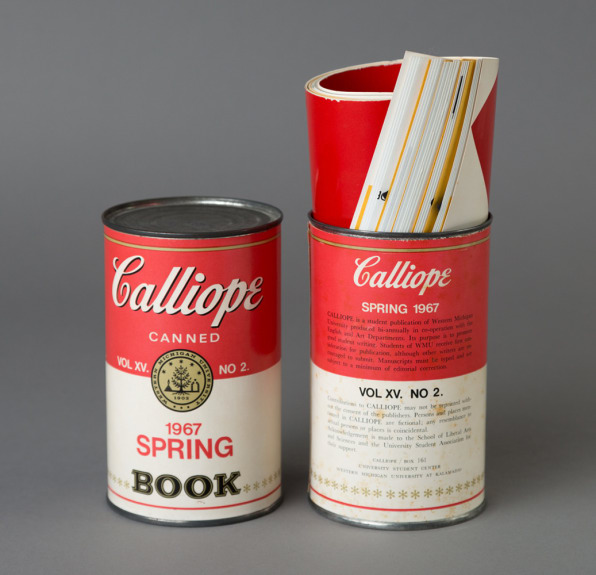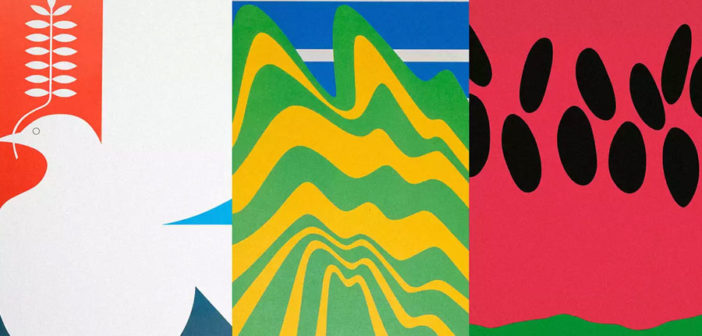“There isn’t a style; it’s ‘appropriate design,’” says one of the founders of a new archive of design from the region.
As graphic design hubs go, we tend to think of big cities like New York or countries like Germany. But Western Michigan? Not really. However, a new digital archive is giving the region the spotlight it deserves.
“West Michigan was a hub of graphic design activity because of the paper industry, the educational programs at Western Michigan University and now Ferris State University, and also the corporations here that supported design and realized what effect it could have on business,” Barbara Loveland, cofounder of the Graphic Design Archive of West Michigan, tells Co.Design. [Graphic design] raised itself to a level of excellence because of the demand.”

A couple years ago, Loveland–a retired graphic designer and professor–was cleaning out her basement when she came across boxes filled with ephemera from her tenures at Herman Miller and Western Michigan University. Rather than chuck the posters, ads, books, and other material in the trash, Loveland thought about donating the work. But when she spoke to Linda Powell, a close friend and colleague, the two got thinking. Many designers around their age were downsizing and paring back their belongings, potentially throwing away history in the process. Why not archive the work and find a way for it to live on eternally and become an educational tool?Enter the Graphic Design Archives of West Michigan, an online museum dedicated to preserving work from designers, firms, and clients based in the region. The site, which has about 400 entries and is growing, is categorized by project type–like environmental communications, identity systems, packaging, posters, and so on–along with individual designers, design studios, clients, and decade. Loveland and Powell are creating original scans and photographs of the work, much of which has never been digitized before. (The physical objects are housed at the Western Michigan University Archives and are available to be seen in person by appointment.)

The designers included in the archive read like a who’s who of practitioners: Deborah Sussman, an Eames Office designer and the branding mind behind the 1984 L.A. Olympics; Steve Frykholm, Herman Miller’s vice president of creative design and the creator of the company’s iconic Picnic Posters; and Will Burtin, a data visualization pioneer.“It’s a legacy that deserves preservation,” Powell adds.
The reason why Western Michigan’s graphic design has flown under the radar for decades is its very strength, according to Powell and Loveland. Designers working in the region were concerned more about solving the specific problems at hand creatively than forging a recognizable regional identity.
“There isn’t a style,” Loveland says. “It’s ‘appropriate design’–the designs are appropriate to their audience.”
Additionally, because the region’s population is fairly small, art directors and companies based in the area worked with the best talent from across the globe. “It’s hard to pick out individual pieces because it’s the total that makes the story,” Powell says when I ask her about what motifs and projects are most emblematic of what makes Western Michigan design special.
For example, French Paper–a mill in Niles, Michigan, that creates specialty paper–was more experimental and expressive since its target audience was designers, and the company wanted to show the variety of effects its products could yield. Brunswick–a Muskegon, Michigan, company known for sporting goods today but that made missiles in the past–commissioned conceptual illustrations for its ads to appeal to engineers. Meanwhile, consumer-facing work exercised restraint.
“We didn’t try to test wild trends; we tried to do clear communications that were beautiful and reflected the products,” Powell says of her work for Herman Miller.
Right now, the site focuses mostly on historic print work since Powell and Loveland are working against time to collect as much material from designers who, like them, are retired and downsizing. The second phase of collecting will focus on work post-1990–when computers and digital design began supplanting print–and the third phase will focus on contemporary work. Loveland and Powell are the main forces behind the archive, but they’re working with volunteers and local students to help them design and build the website, which underscores the didactic message of the project. They’re also assembling a board to help them vet entries into the archive.
“It’s to satisfy curiosity about what in the heck graphic design is,” Loveland says. “We want to get people excited about graphic design as a profession. Where it’s been gives a basis for where it’s going.”
–
This article first appeared in www.fastcodesign.com
Seeking to build and grow your brand using the force of consumer insight, strategic foresight, creative disruption and technology prowess? Talk to us at +9714 3867728 or mail: info@groupisd.com or visit www.groupisd.com

